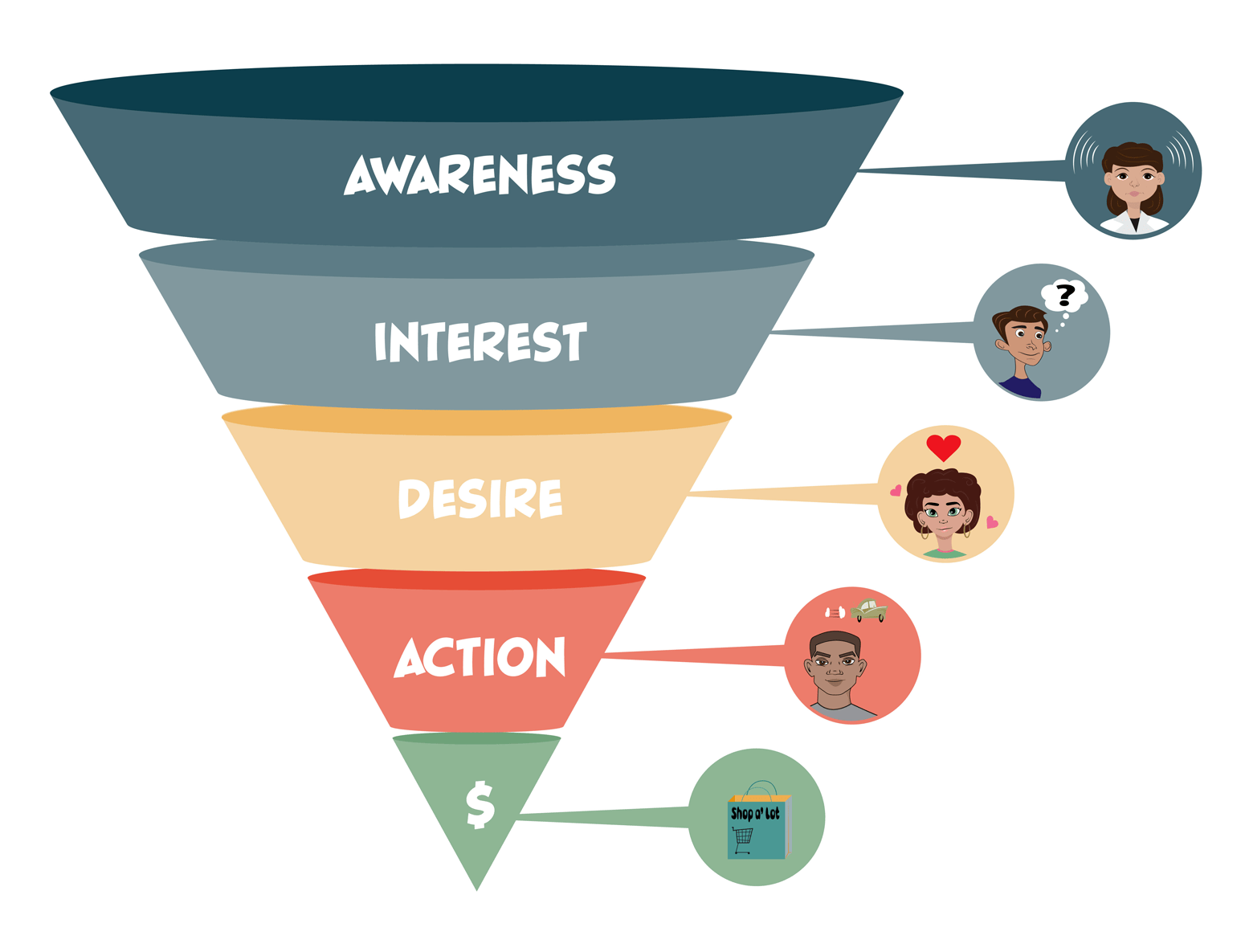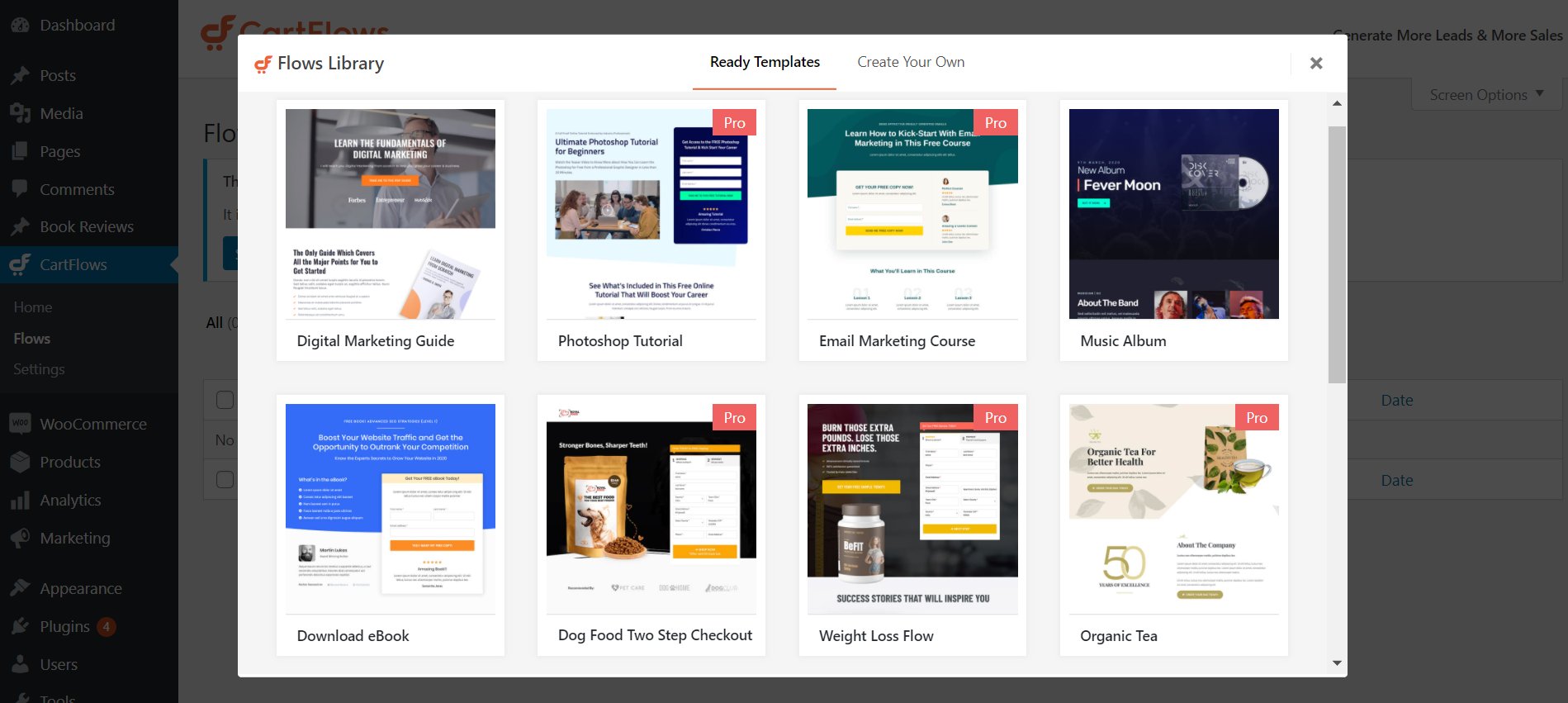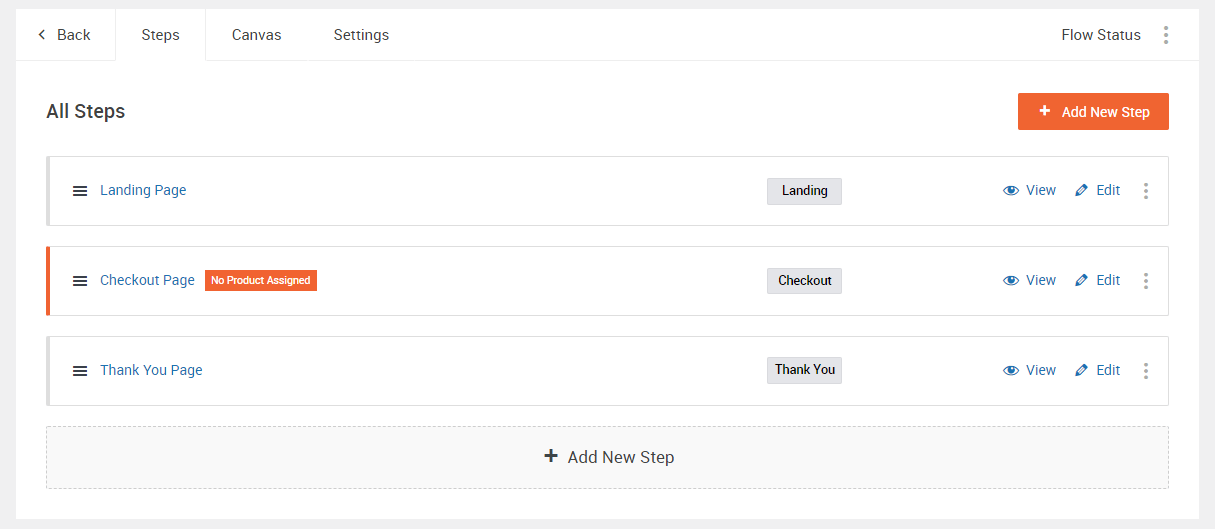Sales funnels are an essential part of any eCommerce business. They help you convert visitors into leads and then customers.
Are you looking to increase your online sales? A sales funnel can help you do just that! In this guide, we’ll show you how to create a sales funnel in WordPress for free using the popular WordPress plugins, WooCommerce and CartFlows.
By the end of this guide, you’ll have a sales funnel up and running, and you’ll be on your way to increased sales and profits!
What is a Sales Funnel?
A sales funnel helps you define your product, sell it, and deliver results. It’s a structured approach that breaks down the buying process into specific steps.
Each step leads customers through an awareness phase, then a conversion phase, until they finally become buyers after their desired action has been achieved.
The goal of each step is to increase demand along the way without distracting users from the destination. The journey should feel guided but not forced.
It works because people need things, and when they want something, they will seek out a solution.
Why do you need a Sales Funnel?
Funnels are one of the most effective marketing tools that you can use to generate leads and convert them into paying customers. It is one of the most important tools in a marketer’s toolkit.
Nowadays, there’s a lot more competition, and online businesses need to be more strategic in their approach.
There are a lot of reasons why you need a funnel, and some of them are:
- It helps you better understand your customers
- It can help you increase your conversion rate
- It enables you to segment your audience
- It helps you track your results
- It helps improve your average order value
- It makes your marketing more efficient
Which kinds of businesses are the Sales Funnel ideal for?
The sales funnel is ideal for businesses that want to increase their sales and improve their bottom line. Businesses that are struggling to generate leads or convert leads into customers may find that setting up a funnel can help them overcome these challenges.
By providing a structure for sales and marketing activities, the sales funnel can help businesses to focus their efforts and resources on the most effective activities.
If you’re thinking about using it to improve your business, here are some examples of businesses that it could be particularly effective for:
1. Businesses that sell high-value products or services: If you’re selling products or services that are expensive, it’s important to make sure that you’re converting as many leads as possible into customers. A funnel for sales can help you focus your efforts on the most effective activities to achieve this.
2. Businesses with long sales cycles: If your business has a long sales cycle, the sales funnel can help you to manage the process and keep track of your progress. By breaking down the sales process into stages, you can ensure that you’re taking the right steps to convert leads into customers.
3. Businesses that sell to multiple decision-makers: If you’re selling to businesses, it’s likely that there are multiple decision-makers involved in the purchase decision. The sales funnel can help you to manage your interactions with each decision-maker and ensure that you’re taking the right steps to win their business.
4. Businesses that rely on word-of-mouth marketing: If you’re relying on word-of-mouth marketing to generate leads, the sales funnel can help you to track your progress and measure the effectiveness of your efforts. By tracking how many leads are generated at each stage of the funnel, you can identify areas where you need to improve your marketing activities.
What are the steps within a Sales Funnel?
The steps within a sales funnel can vary depending on the product or service being sold. There are generally four main stages according to the AIDA framework, which stands for Awareness, Interest, Desire, and Action.

- Awareness: The first stage of any sales-related funnel is awareness. In this stage, potential leads are introduced to your product. They might learn about your brand through marketing campaigns, word of mouth, or simply through exposure to your product.
- Interest: Once users are aware of your product, they need to develop some level of interest in order to move on to the next stage of the funnel.
- Desire: The next step is to create a desire for your product or service. This can be done by showing how your product or service can meet the needs or wants of your customer. Providing more information about your product/service, through case studies or testimonials, or by offering a free trial or demonstration will work the best.
- Action: The final step in the AIDA framework is to get the customer to take action. This can be done by providing a simple way to purchase your product or service, and by making it easy for the customer to contact you with any questions or concerns.
By understanding the funnel and how to optimize each stage, you can improve your chances of converting potential leads into actual customers.
What do you need to build a WordPress Sales Funnel?
You will need the following to build an effective sales funnel using WordPress:
A marketing plan
Your marketing strategy tells you what you are going to do and how you are going to do it. It is a roadmap that shows you where you are heading and what you are going to do to get there.
In order to develop a successful sales funnel using WordPress, you will need to create a list of the steps that you need to follow. You can use paid advertising, email marketing, social media, blogs, and other means.
WooCommerce and a funnel builder plugin
To build a sales funnel in a WordPress website, you will need to install WooCommerce and a funnel builder plugin. The one that we will use is CartFlows.
WooCommerce is the most popular eCommerce plugin available for WordPress.
CartFlows is a highly versatile and easy-to-use funnel builder for WordPress. There is a Pro version of CartFlows that lets you do awesome things.
It allows you to add coupons, order bumps, dynamic or fixed upsells/downsells, special form fields, and special product options.
Both of these plugins are available free of cost, so you don’t need to worry if you’re just starting out and lack funds or just want to test things.
A fast WordPress theme
Speed is a crucial factor when it comes to conversions, and a fast WordPress theme can help you generate more traffic.
If your site loads slowly, you may lose many visitors and potential customers. If you want to speed up the loading time, you will need to choose a fast WordPress theme.
Astra is a great theme. It is a very powerful theme that is packed with advanced features. In fact, it’s one of the best themes for WooCommerce sites.
Build a Sales Funnel in WordPress Site in 3 Steps
We have discussed everything related to funnels. It’s now time to actually build one using WordPress and CartFlows.
Step 1: Install required plugins
Install both WooCommerce and CartFlows.
It will show you some onboarding steps. Just follow them and add some products so that we can start creating a funnel in the next step.


Once done, activate CartFlows and configure the settings shown while onboarding.


Step 2: Build a Landing Page
Landing pages or sales pages are used to convert interested visitors during the ‘interest’ phase. It specifically targets the users who might have already discovered your marketing campaign and are now looking for more details about the product/services you’re offering.
Now it’s the time to start using CartFlows. To build your landing page, go to CartFlows > Flows > Add New.
Select a template from all the given ones. You can even customize them later.
CartFlows call the templates “flows” and it will show you templates based on the page builder you choose (Elementor or Gutenberg) during the setup.


Once a flow is selected, click Import Flow, and it will take you to the Edit Flow screen.
The template we chose included a landing page, a Checkout page, and a Thank You page.


In this step, we will only configure the landing page. Click Edit, and it will open a page editor for your landing page, which will depend on the page builder you’re using.
You can move, remove, add, and modify blocks in the editor. Make sure to add a clear CTA (call-to-action) and save changes.
Step 3: Setup Checkout and Thank You Pages
Basically, you have to edit both the Checkout and Thank You pages that we created in step 2.
Go back to the Edit Flow screen.
The first thing we need to do is to assign a product to the landing page. Click Edit beside the Checkout page and scroll down.
There will be a section named Checkout Settings. You have to set up your product here.


Thank you page can be used to thank your customers for buying from you. It helps customers feel more valued.
It’s very important that you have a clear CTA on your “Thank You” page. You can upsell related products or ask customers to sign up to email newsletters or social media updates.
CartFlows will now start directing your users through the flow you’ve assigned automatically throughout the site.
Conclusion
We have created the most comprehensive guide on how to set up a sales funnel in WordPress.
The guide explains everything you need to know about funnels for sales and how to use them effectively.
The goal here was to show the power and flexibility of CartFlows, by creating a multi-level, multistep funnel for each step being a different page on a site.
If you have any questions about this tutorial, then feel free to ask them in the comments section below. Cheers!
[ad_2]
![Make a Sales Funnel in WordPress for Free ([year] Guide)](https://rankwebtools.com/wp-content/uploads/2024/07/1720479321_Make-a-Sales-Funnel-in-WordPress-for-Free-year-Guide.png)